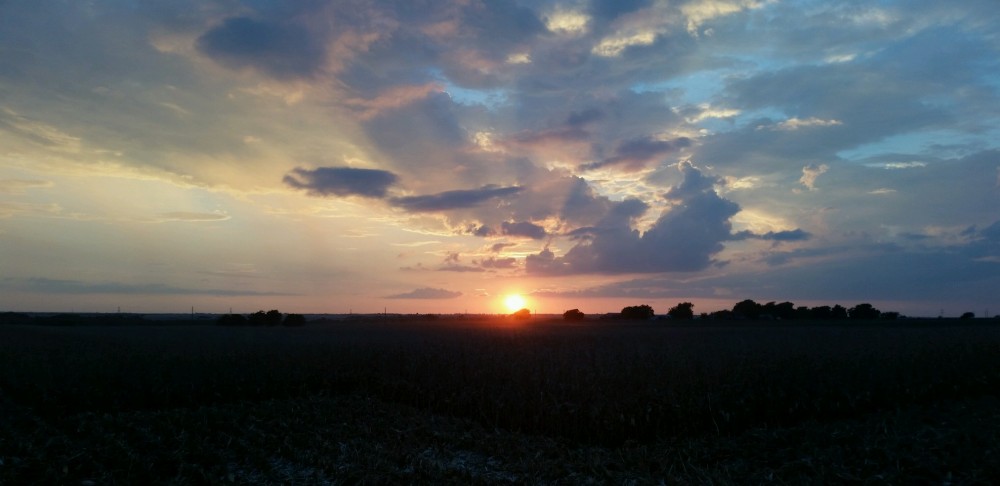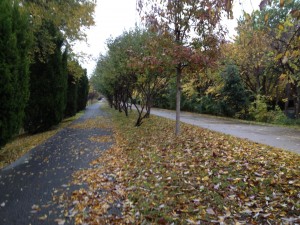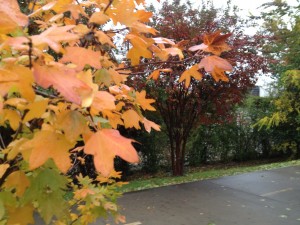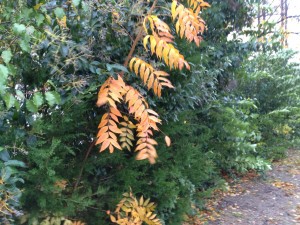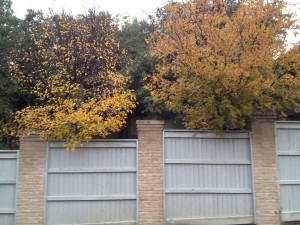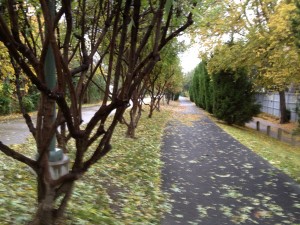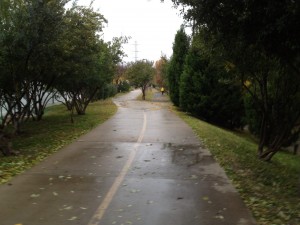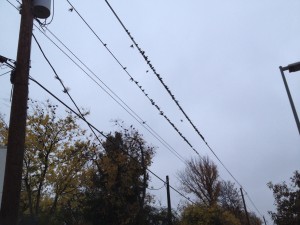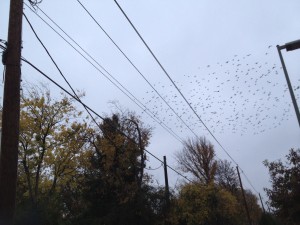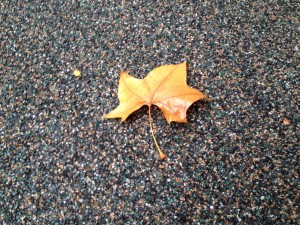My hand-held read 37 degrees Fahrenheit (28 degrees Celsius) when I started my walk in the cold and damp of the early morning. A front passed through after midnight with dropping temperatures and pouring rain ushering the brittle leaves from their branches to the wet ground.
Color guards cling to the right and to the left as we early morning sojourners brave the cold and wet.
Where they stand gazing out over the walls of their castles, the ranks of the brightly dressed sentries of fall appear thinning in the assaults of early winter .
Soon, the trail of the Katy, the roadway that passes between the city that has grown up and around the trains that no longer pass that way, will lose it protective covering and be exposed again to the elements.
The Missouri-Kansas-Texas Railroad is gone. In its place, a long surfaced parkway welcomes runners, walkers and bikers who wonder after the trail’s name, “Katy.” Years ago, after the Civil War that divided this nation and killed so many of its young men, cotton was grown to the west of the small town of Houston, Texas. When the farmers and workers loaded the wagons with the white fibers, they’d climb aboard and yell back to their families on the porches of the homesteads: “We’re off to the Katy!” The bounty of the cotton harvest was hauled to the railcars of the Missouri-Kansas-Texas to travel around the country and beyond to the world. Those farmers must have thought that name, Missouri-Kansas-Texas, was just a might too long for friendly Texas talk. So, they shortened the railroad to KT and took those wagons to the rail stop of the “KayTee.” It was there that the town of Katy, Texas was born. Katy is now one of the largest western suburbs of the very large city of Houston, Texas. Things changed, but the name stuck. In fact, folks all over Texas started referring to that railroad as the “Katy.” Even up Dallas way and even after the tracks were pulled and the roadbed converted to a manicured path for the lonely walker I followed this morning, the phantom trail of the old railway is called the Katy.
The birds of winter still line the wires beside that old line. When I stop and lift the camera of my hand-held, the skittish flock lifts and soars away. Perhaps, I think, those birds are off in search of a more suitable perch along of a real railroad heading to the south, where the whistles of the modern engines echo a plaintive call to the years goneby and the times changed.
An early morning walk in the cold allows the mind to wander. I step over a resting leaf and see he, like me, is observing the passing of time along the Katy Trail.
May your steps accompany you in pleasant reverie to your destination,
Grandpa Jim
